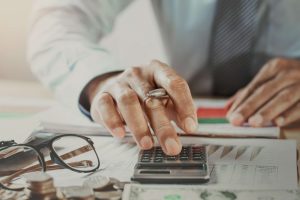Content

Apart from being used to help a business generate revenue, they are closely looked at by investors when deciding whether to invest in a company. For example, the fixed asset turnover ratio is used to determine the efficiency of fixed assets in generating sales. Current assets, on the other hand, are used or converted to cash in less than one year and are not depreciated. Current assets include cash and cash equivalents, accounts receivable, inventory, and prepaid expenses. The effective management of fixed assets is an increasing challenge.
- A company’s fixed assets are reported in the noncurrent (or long-term) asset section of the balance sheet in the section described as property, plant and equipment.
- The information, coupled with predictive scoring, enables the system to prescribe preemptive tactics or strategies.
- This larger uncertainty will typically be compensated by a higher margin in the required lease payments.
- We can help you enhance the value of your fixed assets, from acquisition to retirement.
- By submitting this form, you agree that PLANERGY may contact you occasionally via email to make you aware of PLANERGY products and services.
Under U.S. GAAP, not all non-current assets are depreciated or amortized. Fixed assets such as servers, transport trucks and elevators require a large capital investment. In some businesses, as much as 40 percent of investment goes to buying equipment and vehicles. Learn more about how our fixed asset management software can help you to maintain compliance with the latest corporate governance regulations. If a lot of your assets move around – such as laptops that are issued to employees that go everywhere they go – or a fleet of company vehicles, then barcodes don’t necessarily do you any good. You’ll get an alert if your equipment or vehicle ever crosses the boundary of the geofence. Once a fixed asset has reached the end of its useful life, it is usually disposed of by selling it for a salvage value.
By Business Need
Property, plant, and equipment (PP&E) are long-term assets vital to business operations and not easily converted into cash. When a fixed asset reaches the end of its useful life, it is usually disposed of by selling it for a salvage value.
- If the asset’s value goes below its net book value, the asset is subject to an impairment rate down.
- A current asset is an item that a company acquires to be part of its property with the intention of monetizing and fully consuming them for the short term or for a period of less than 12 months.
- “With Sage Fixed Assets, Sage has developed the most technologically sound fixed asset software solution on the market.”
- Online platforms remove the burden of multiple manual entries, improve reporting and facilitate audit trails.
- Stop overpaying taxes and insurance premiums and start increasing your bottom line.
- Incomplete projects are designated as “Work-in-Process” and the capital project fund is closed to the “Work-in-Process” account to be reflected on the financial statements as such.
And other equipment not listed above, as determined by Purchasing. Consider the interaction with other tax provisions (e.g., interest expense deduction limitation). Consider the year of change and determine the procedural requirements and other considerations https://www.bookstime.com/ for filing the method change, usually requiring filing Form 3115, Application for Change in Accounting Method. For example, if a fire destroyed the same $6,000 classroom but the payout was $7,000, you have a gain in proceeds of $1,000.
List Of Fixed Assets In Accounting
After depreciation, a loss of $20,000 is recognized on the disposal of the asset. Depreciation spreads the cost of an asset over its service life. By reducing the taxable earnings, depreciation reduces the amount of taxes owed. For the purpose of tax deductions, an asset’s service life may be different than its depreciation life. Tracking Eliminate lost assets and reduce insurance costs and tax overpayments.

Sage Fixed Assets integrates with most popular ERP and accounting solutions. Accounting, project management, estimating, and service management. Native cloud technology with real-time visibility, open API, AICPA preferred. At least once a year, the additions to the Fixed Asset system are reconciled to the invoices paid in the above noted accounts in the general ledger. To better illustrate what this means, let us take a company that has made an investment in bonds for example.
The Main Focus Points When Analyzing A Balance Sheet
Features include handling workflows, resourcing and routing, operating and repair guidance, and reporting and auditing. Simply having asset tracking software does not guarantee that your employees will use it correctly.
Gain on disposal is calculated by subtracting the accumulated depreciation from the original cost of an asset and then adding the sales amount. In this example, the asset was purchased for $100,000, and accumulated depreciation is $80,000. A buyer paid $54,000 cash for the asset, which results in a gain on disposal of $34,000.
The Benefits Of Creating And Maintaining A Fixed Asset Register
Fixed assets include existing buildings and facilities that are under construction. Anything under construction exists in an accumulation account (for example, Construction-in-Process) until the work is complete. Upon completion, an accountant will move the asset to the appropriate fixed-asset account.

A baking firm’s current assets would be its inventory (flour, yeast, etc.), the value of sales owed to the firm from credit extended (i.e. debtors or accounts receivable), and cash held in the bank. Its non-current assets would be the oven used to bake bread, motor vehicles used to transport deliveries, and cash registers used to handle cash payments. While these non-current assets have value, they are not directly sold to consumers and cannot be easily converted to cash. This is to reflect the wear and tear from using the fixed asset in the company’s operations. Depreciation shows up on the income statement and reduces the company’s net income. In the remainder of this Procedure, “fixed assets” refers to the fixed assets described in A.2 (capital/capitalized) and A.3 above. Only these fixed assets are tagged and tracked in the Finance department’s college-wide accounting system.
What Are Other Types Of Noncurrent Assets?
You look at the fixed assets in the accounts to find that assets valued at £5 million were transferred with the sale. Asset disposalDispose of assets in preliminary mode to review journal entries that will be posted to GL and fixed assets when you dispose of assets in final mode. Transfer assetsTransfer assets in preliminary mode to review journal entries that will be posted to fixed assets and the GL when you transfer assets in final mode. Compute depreciationCompute depreciation in preliminary mode to review journal entries that will be posted to fixed assets and the GL when you compute depreciation in final mode. After performing research, you determine that the useful life of the bulldozer is 10 years and the salvage value is $100,000. You can expect the bulldozer to depreciate by $400,000 over 10 years of use.
A quarterly email is sent to equipment managers/property coordinators. If you would like to receive this email, please contact someone in the list below. The information contained herein is not intended to be “written advice concerning one or more Federal tax matters” subject to the requirements of section 10.37 of Treasury Department Circular 230. Some or all of the services described herein may not be permissible for KPMG audit clients and their affiliates or related fixed assets entities. Investigations and Disputes World-wide expert services and tech-enabled advisory through all stages of diligence, forensic investigation, litigation and testimony. Cyber Risk Incident response, digital forensics, breach notification, managed detection services, penetration testing, cyber assessments and advisory. World-wide expert services and tech-enabled advisory through all stages of diligence, forensic investigation, litigation and testimony.
A fixed asset, a subcategory of a noncurrent asset, is valuable for an organization to hold to help it generate income, in addition to expanding staff and department processes. In this article, we will discuss what a fixed asset is, the differences between fixed assets in comparison to others and how to record fixed assets on financial statements. Business owners know that maintaining complete and up-to-date fixed-asset records isn’t easy. What’s more, if you are preparing for any audit, fixed-asset management accounting can be quite daunting.
Online platforms remove the burden of multiple manual entries, improve reporting and facilitate audit trails. Additionally, fixed-asset accounting systems can track assets to guard against theft. Asset tags allow organizations to track equipment and other assets through their lifecycle to ensure maintenance and prevent loss. Basic tags can include QR, barcodes or serial numbers and organization contact information. On computer equipment, organizations frequently use the manufacturer’s serial number or universally unique identifier for asset tracking.
Capture, Track, And Maximize Your Fixed Assets
You may end up recording a gain or loss on the asset disposal transaction during that financial period. With that said, the costs involved in a company’s property, plant or equipment are typically reported on the company’s financial statements as a net of their accumulated depreciation. Purchased through acquisitions and equipment purchases, capital leases, and proceeds from property disposals. Noncash transactions include translation gains and losses, transfers, depreciation, reverse consolidations, and restatements. For assets that the institution leases to clients, it bears the residual value risk. For the leasing of commoditized products such as cars, this residual value risk may be assessed based on historical data, using statistical analysis. For nonstandard products, such as specialized manufacturing tools, the residual value risk is difficult to assess.
Accumulated Depreciation
Its main purpose is to enable an organization to accurately record and maintain both financial and non-financial information pertaining to each asset and to easily identify and verify an asset when required. Fixed assets are tangible assets that a business expects to own for more than a year. Non-current assets are intangible assets that a business also expects to own for more than a year. Current assets are those a business expects to own for at most a year. Net fixed assets are your total fixed assets minus any depreciation on those assets and any liabilities. In simpler terms, it translates that you need to account for any decrease in the value of your fixed assets.
Ratios Every Business Should Monitor
They are not sold to customers or held for investment purposes. Depreciation is an accounting method of allocating the cost of a tangible asset over its useful life to account for declines in value over time. The asset’s value decreases along with its depreciation amount on the company’s balance sheet. The corporation can then match the asset’s cost with its long-term value. If your organization builds an asset and you borrowed money to pay for the work, the cost comprises all components, including materials, labor, overhead and any interest expense.
